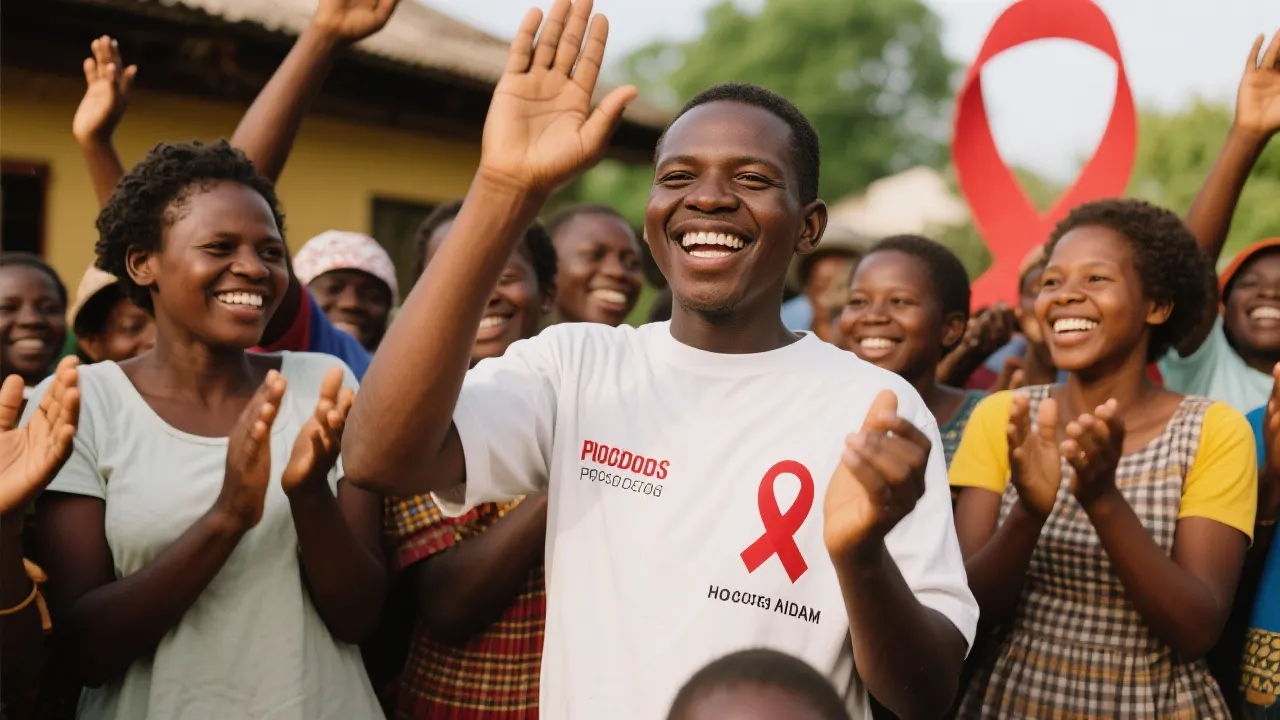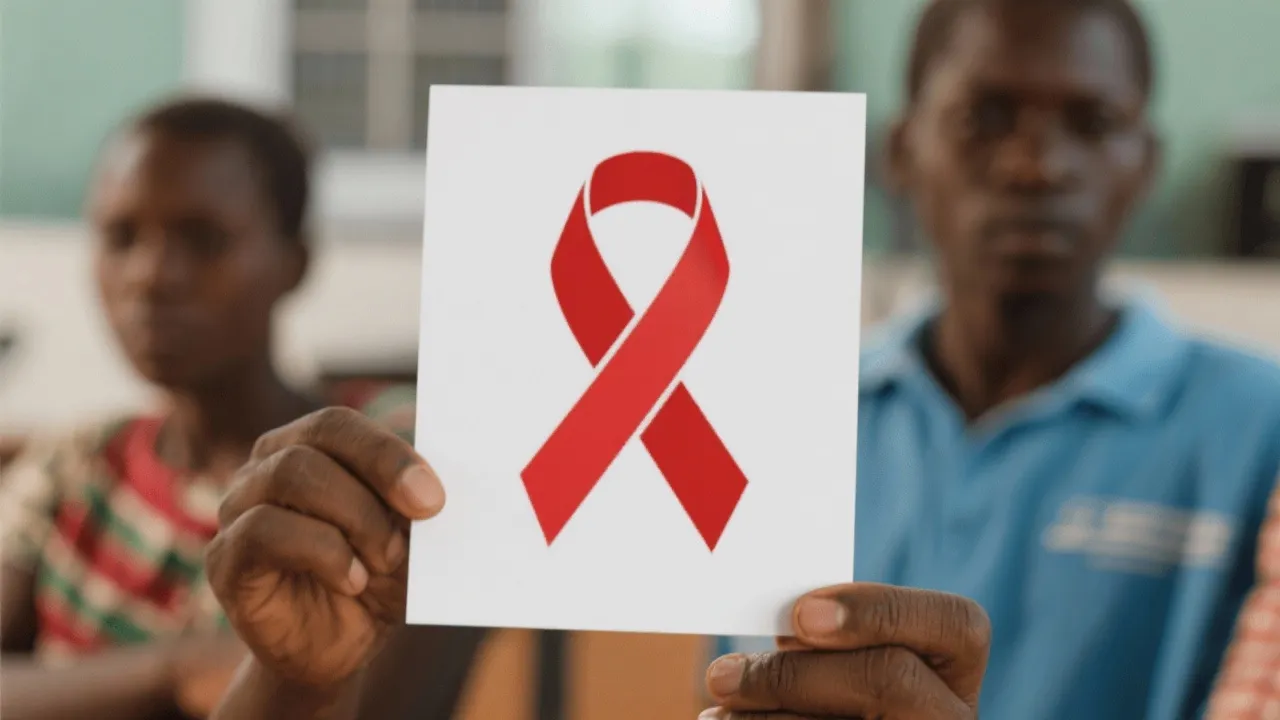Understanding HIV Decline Trends
Recent trends indicate a decline in HIV incidences globally. This development is pivotal in the fight against the virus, featuring insights into the factors contributing to this decline, such as advancements in medical treatments, increased awareness, and global policy initiatives. Such progress offers hope for combating HIV but also highlights ongoing challenges that require sustained action.

Introduction to HIV Decline
In recent years, the global trend in HIV incidences has shown a promising decline. This progress is a testament to the concerted efforts of various stakeholders—from healthcare providers to international organizations—committed to eradicating this epidemic. Understanding the multifaceted reasons behind the decline in HIV is crucial for maintaining momentum and developing future strategies. The narrative around HIV has transformed significantly, shifting from one of overwhelming crisis to that of hope, renewed energy, and action against a manageable health issue.
The Factors Influencing Decline
Several key factors have contributed to the decline of HIV rates globally. Increased access to preventive measures and treatments, such as Pre-Exposure Prophylaxis (PrEP) and Antiretroviral Therapy (ART), has played a significant role. Advances in medical technology have made these treatments more accessible and effective, thereby reducing transmission rates significantly.
Moreover, innovations in drug formulation have led to easier regimens with fewer side effects. Simplified dosing schedules with once-daily pills have increased adherence and improved patient outcomes. Combined with the expanded availability of ART in healthcare centers and community clinics, these developments have ensured that those in need can receive life-enhancing treatment.
Additionally, global health initiatives have raised awareness and education about HIV prevention. Campaigns targeting high-risk populations have been instrumental in decreasing new infections, as these communities now have more knowledge and resources to protect themselves. Tailored approaches addressing social and cultural factors have proven particularly effective, allowing communities to engage in discussions about HIV without fear of stigma.
Education and Awareness
Public health campaigns and education programs have shifted perceptions and awareness about HIV, leading to more informed and cautious behavior. Schools and community organizations have been pivotal in dispelling myths and stigma associated with HIV, encouraging individuals to get tested and seek treatment. Initiatives empowered various organizations to create actionable outreach programs that utilized local influencers and community leaders, thus enhancing the legitimacy and reach of the information disseminated.
In many countries, integrated health education in school curricula promoted long-term awareness among youth, fostering a generation that is more educated on sexual health and HIV. Campaigns such as "National HIV Testing Day" or "World AIDS Day" have galvanized public interest and participation, bringing attention to the need for continuous education and advocacy.
Policy and Global Initiatives
The role of policy and international cooperation cannot be overstated in the decline of HIV. Programs funded by organizations such as the World Health Organization (WHO) and the Joint United Nations Programme on HIV/AIDS (UNAIDS) focus on both prevention and treatment. Efforts aim to provide comprehensive healthcare solutions, especially in regions heavily impacted by the virus. Governments across the globe have begun to recognize the significance of well-structured HIV policies in their national health agendas, leading to increased funding and prioritization of research and preventive measures.
Importantly, international initiatives like the 90-90-90 targets set forth by UNAIDS aim for 90% of people living with HIV to know their HIV status, 90% of those diagnosed with HIV to receive sustained antiretroviral therapy, and 90% of those receiving antiretroviral therapy to achieve viral suppression. Success in meeting these goals would vastly improve life expectancy and quality of life for those affected while reducing transmission rates effectively.
Challenges in Sustaining Progress
While the decline in HIV rates is an encouraging sign, there are still significant challenges that need to be addressed. Stigma and discrimination continue to hinder people from accessing necessary services. Cultural myths surrounding HIV can lead to social isolation, making it more challenging for individuals to seek testing or treatment. Efforts to counteract these barriers are vital to continue the downward trend of HIV incidences. Health service providers play a crucial role in creating welcoming environments that reassure patients that they will receive non-judgmental care.
In some areas, healthcare systems remain underfunded and understaffed, creating gaps in service delivery that make it difficult for those at risk to receive timely care. Additionally, geographical disparities matter; marginalized groups in rural regions may face greater hurdles compared to those in urban centers. Addressing these inequalities while promoting targeted interventions for high-risk populations needs urgent attention. Having trained personnel who understand the community dynamics could bridge the gap in healthcare accessibility.
Case Studies
Case studies provide a closer look at the impacts of specific interventions in different regions. One notable example is the community-based approach in South Africa, which combines local leadership with international support to facilitate widespread access to PrEP and ART. In South Africa, local community health workers were trained to deliver health education and treatment on-site, allowing for a seamless integration of services that increased engagement and reduced missed appointments.
Furthermore, the National Department of Health’s campaigns included mobile clinics reaching rural populations that might otherwise lack consistent access to healthcare services. These interventions have significantly reduced new infections in the region, showcasing how combining technology, community action, and policy can create a sustainable model for prevention and care.
Another worthwhile mention is the success seen in the city of New York through the "Ending the Epidemic" initiative, which standardized access to HIV services across the city. Through coordinated efforts involving various healthcare providers, availability of resources for testing and treatment was improved, showing a tangible decrease in HIV incidence rates. These examples highlight the importance of tailored solutions adapted to fit local contexts and needs.
Statistics and Sources
Accurate data collection and reporting have contributed to understanding the effectiveness of various interventions. The UNAIDS Global Report is a comprehensive source of data showcasing the decline in HIV worldwide. According to their recent report, new HIV infections have fallen by 23% since 2010, exemplifying significant progress through collaborative efforts. In some regions, like sub-Saharan Africa, ART coverage among those who need it reached impressive rates exceeding 70%, further demonstrating the influence of strategic health programs.
Furthermore, surveillance systems have improved significantly, allowing health officials to track outbreaks, monitor ART adherence, and gauge the needle sharing among people who inject drugs. Longitudinal studies have been implemented, tracking cohort data to explore the implications of ART and preventative medications in various demographics. This data is instrumental in shaping future policies and funding allocations towards the most impactful programs.
Comparison of Interventions
| Intervention | Impact |
|---|---|
| PrEP for High-Risk Populations | Significantly reduces the risk of HIV transmission, particularly among men who have sex with men and intravenous drug users. |
| Public Health Campaigns | Increased awareness and reduction of stigma around HIV, leading to greater testing rates and improved engagement with healthcare services. |
| Accessibility to ART | Lowered viral loads, reducing the risk of further transmission and improving quality of life for people living with HIV. |
| Community-Based Approaches | Increased public engagement and tailored health education reducing transmission within targeted groups. |
Continued Efforts and Future Directions
The decline in HIV incidences is a call to continue and reinforce current efforts. New strategies and technologies are always under research, focusing on vaccine development and striving for innovative solutions to further curb the epidemic. Researchers are exploring mRNA technology, like that used for COVID-19 vaccines, to create potential preventative vaccines for HIV which could be a game-changer in the field.
Governments worldwide need to sustain and increase funding for HIV prevention and treatment programs to ensure lasting progress. Investing in continuous training of healthcare providers to deal with evolving challenges will be critical. International collaboration remains crucial, as shared knowledge and resources can address gaps in local healthcare systems and drive the success of global HIV prevention goals. Establishing networks among countries can lead to shared best practices, ultimately enhancing the resilience of public health frameworks worldwide.
FAQs
- Why is HIV declining?
The decline is mainly due to increased access to preventive measures like PrEP, improved treatment options, and comprehensive awareness programs that empower communities to take charge of their health. - What regions have seen the very significant decline?
Regions with high infection rates, such as parts of Africa, and those with strong healthcare interventions, like New York City and South Africa, have reported notable progress in reducing HIV incidence rates. - How can we sustain this progress?
Sustaining progress requires continuous investment in resources, global cooperation, and tackling stigma and discrimination that prevents individuals from accessing health services. - What challenges do we face in the global fight against HIV?
Key challenges include ongoing stigma, access to care disparities, and political will in prioritizing HIV in health agendas globally. Continuous engagement and advocacy are needed to ensure these challenges are addressed. - Are there any promising new treatment approaches on the horizon?
Research into long-acting injectable ART formulations and mRNA vaccine technology heralds a future where people can access treatment that is easier to manage and ultimately reduces transmission risk.
Conclusion
The declining rates of HIV offer hope and highlight the effectiveness of global health strategies. However, sustaining this momentum hinges on continuous education, advancement in medical research, and global cooperation. By learning from successful interventions and adapting new technologies, there is a tangible path forward in the battle against HIV. Continued awareness and support are crucial as we aim for a future free from this epidemic.
As we look to the future, it becomes essential to foster a comprehensive framework that not only addresses immediate needs but also envisions a world without HIV-related stigma. Long-term sustainability is grounded in holistic approaches that accommodate the gamut of medical, psychological, and social support that people living with HIV require. By aligning resources, innovation, and community action, we fundamentally alter the trajectory of HIV as a public health concern, ultimately working towards a healthier global population.





